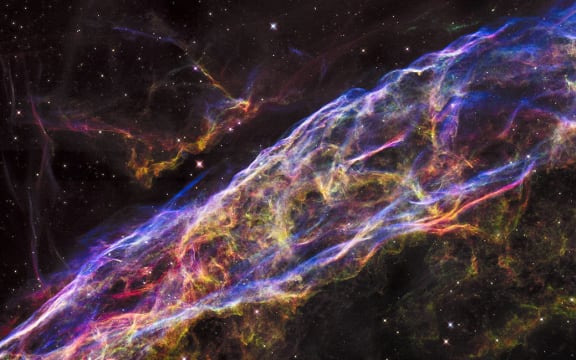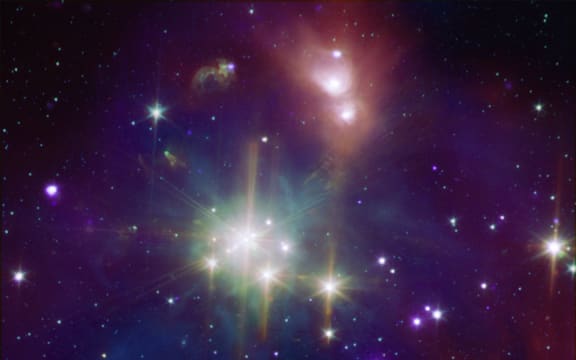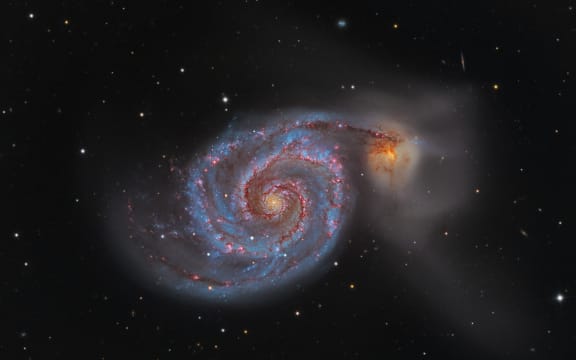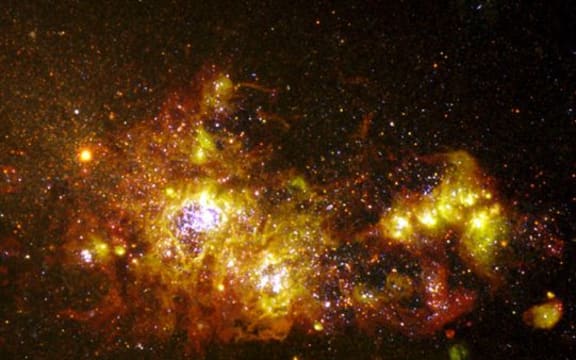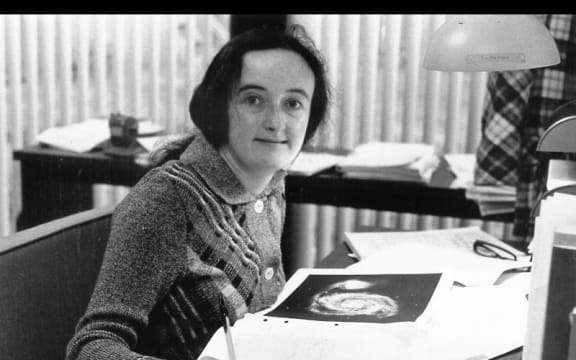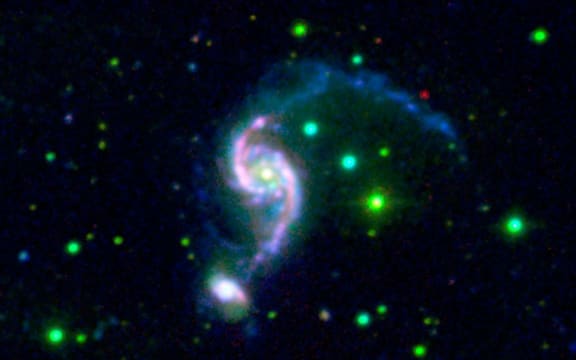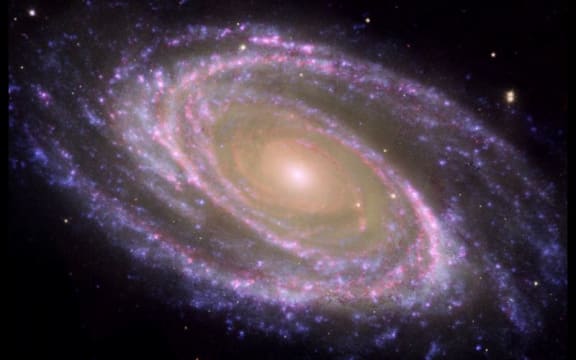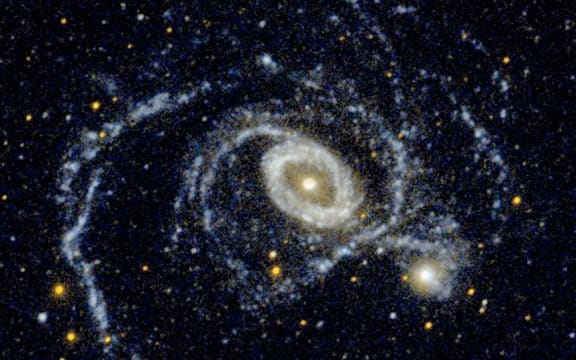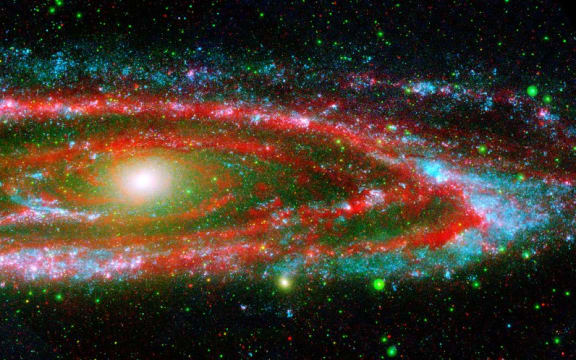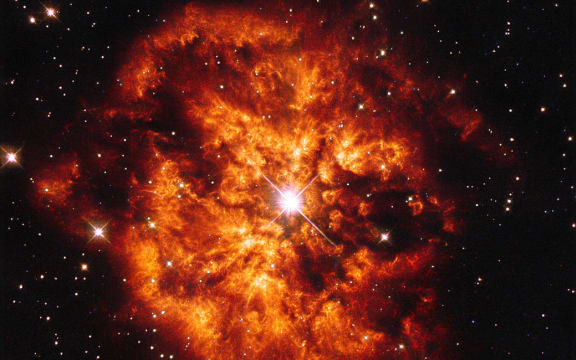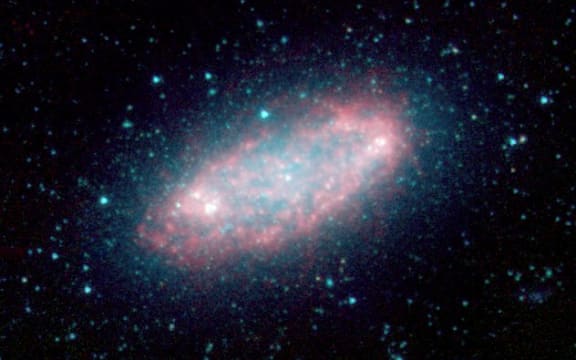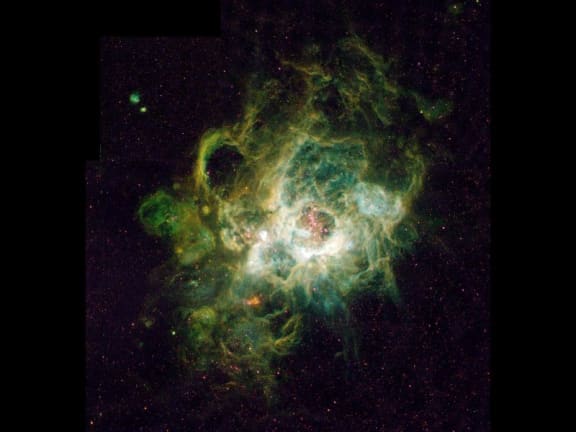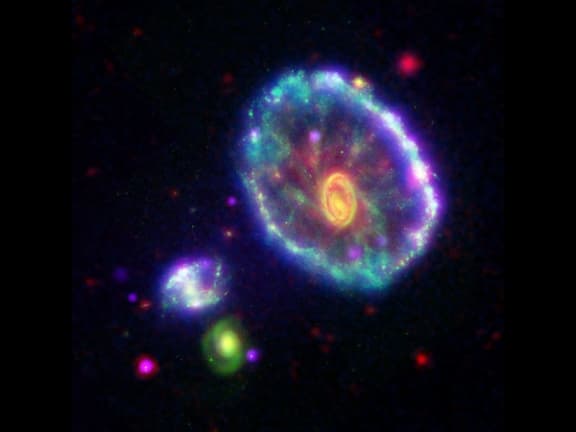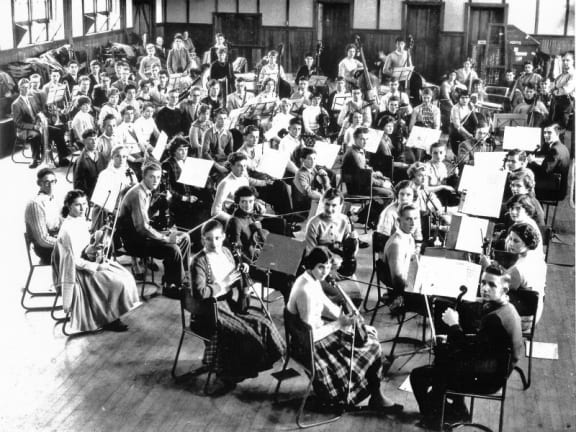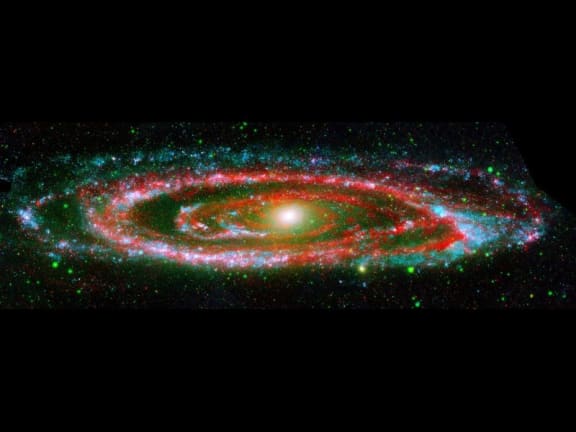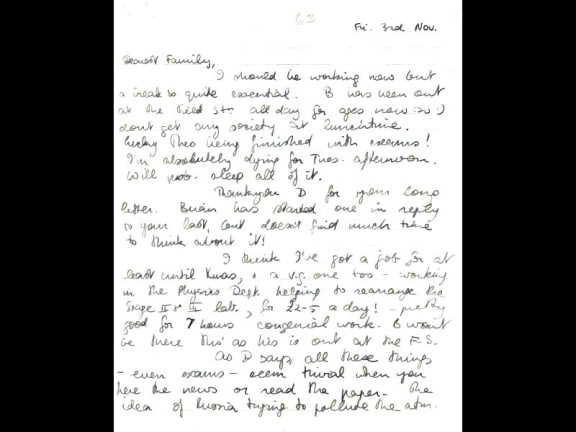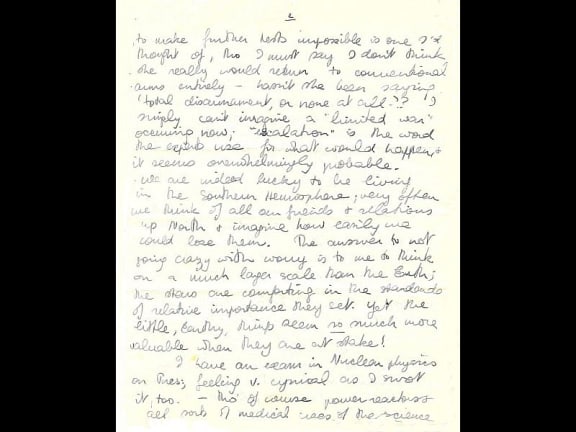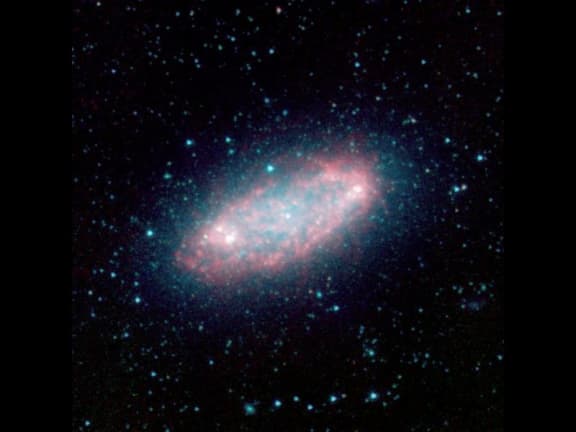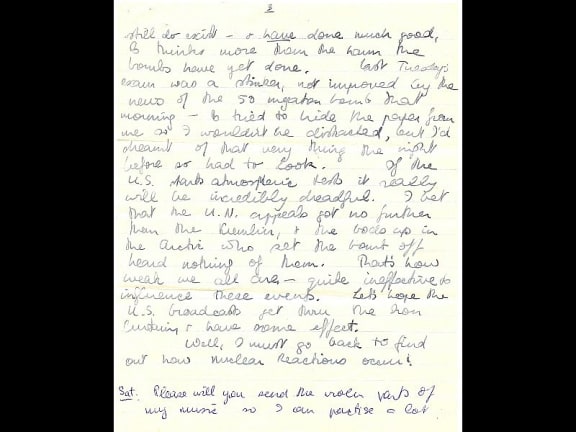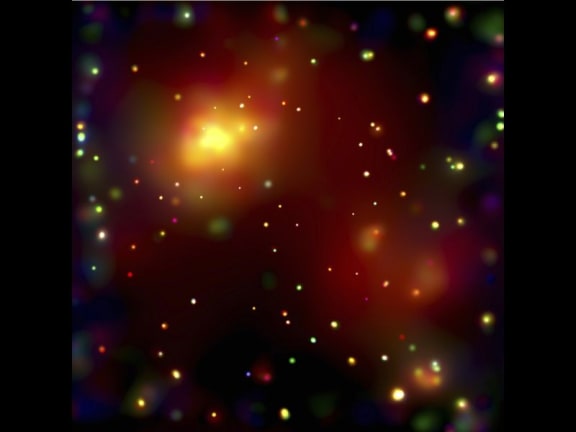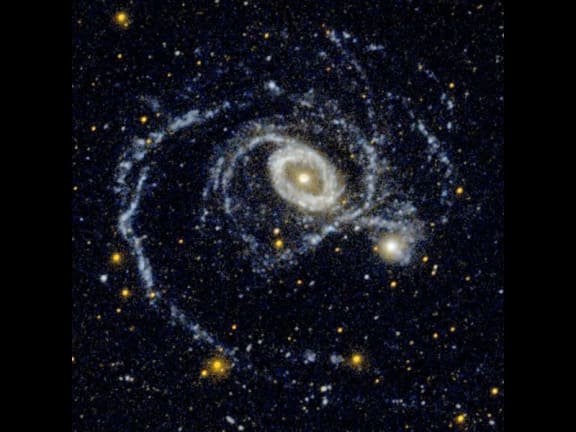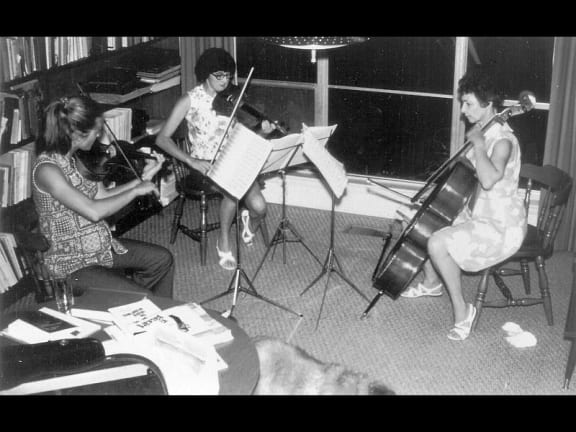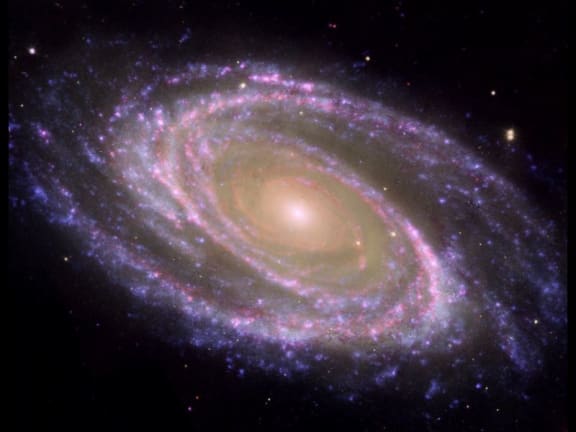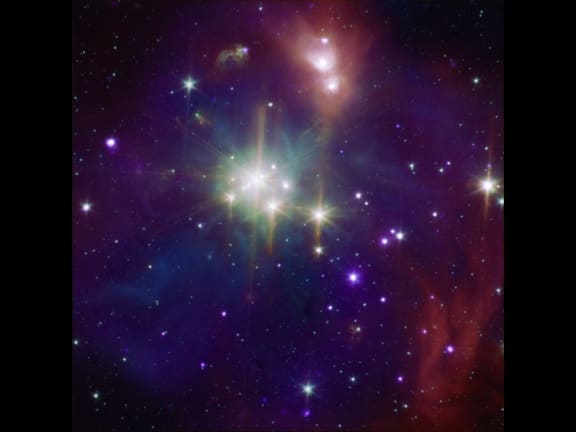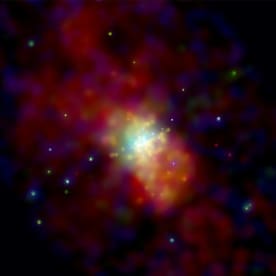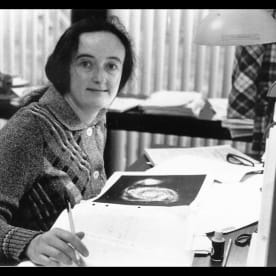Beatrice Hill Tinsley (1941-1981) was a world leader in modern cosmology especially noted for her study of Evolution of Galaxies. Her research on how galaxies evolve over time changed the standard method for determining distances to far galaxies, which, in turn, is significant in determining the size of the universe and its rate of expansion.
Beatrice was also an accomplished violinist who was a foundation member of the NZ National Youth Orchestra. Throughout her busy life she always made time to practice and play chamber music with her friends and attend concerts, and to write home to her family. Music was an important counterbalance to her extraordinary passion and achievements in cosmology.
Nursery of New Stars: A vast nebula called NGC 604, which lies in the neighboring spiral galaxy M33, located 2.7 million light-years away in the constellation Triangulum. This is a site where new stars are being born in a spiral arm of the galaxy. www.nasaimages.org
Beatrice at her debutant ball in 1959.
Approximately 100 million years ago, a smaller galaxy plunged through the heart of Cartwheel galaxy, creating ripples of brief star formation. www.nasaimages.org
The National Youth Orchestra 1959. Beatrice is in the second row from the front wearing a black high-necked top.
Our great galactic neighbour Andromeda brims with young and old stars. www.nasaimages.org
Extract from a letter, 1962.
Gas has been heated to millions of degrees by the violent outflow of matter blasting out of this galaxy. The eruption can be traced back to the central regions of the galaxy where stars are forming at a furious rate, some 10 times faster than in the Milky Way Galaxy. Many of these newly formed stars are very massive and race through their evolution to explode as supernovas. Vigorous mass loss from these stars before they explode, and the heat generated by the supernovas drive the gas out of the galaxy at millions of miles per hour. It is thought that the expulsion of matter from a galaxy during bursts of star formation is one of the main ways of spreading elements like carbon and oxygen throughout the universe. www.nasaimages.org
Extract from a letter, 1962.
Galaxy NGC 2976, located approximately 10 million light-years away in the constellation Ursa Major near the Big Dipper. Unlike other spiral galaxies where the star-forming and dusty regions highlight spiral arms, this galaxy has a rather chaotic appearance. As the "glowing" red emission maps out, Spitzer is able to pierce through dense clouds of gas and dust that comprise the spiral disk, revealing new star formation that is driving the evolution of the galaxy. www.nasaimages.org
Extract from a letter, 1962.
The galaxy cluster Abell 2125. Several massive multimillion degree Celsius gas clouds appear to be in the process of merging. Ten of the point-like sources are associated with galaxies in the cluster and the rest are probably distant background galaxies. The bright gas cloud on the upper left is the core of the cluster and envelopes hundreds of galaxies. www.nasaimages.org
Beatrice with her children, Alan and Terry, 1970.
Located 10 million light-years away in the southern constellation Sculptor, the Silver Dollar galaxy, or NGC 253, is one of the brightest spiral galaxies in the night sky. www.nasaimages.org
String trio, 1970
Bode's Galaxy M81: This galaxy is tilted at an oblique angle on to our line of sight, giving a birds-eye view of the spiral structure. The galaxy is similar to our Milky Way, but our favourable view provides a better picture of the typical architecture of spiral galaxies. M81 may be undergoing a surge of star formation along the spiral arms due to a close encounter it may have had with its nearby spiral galaxy NGC 3077 and a nearby starburst galaxy (M82) about 300 million years ago. M81 is one of the brightest galaxies that can be seen from the Earth. It is high in the northern sky in the circumpolar constellation Ursa Major, the Great Bear. www.nasaimages.org
Beatrice at Yale.
While perhaps not quite as well known as its star-formation cousin Orion, the Corona Australis region (containing, at its heart, the Coronet cluster) is one of the nearest and most active regions of ongoing star formation. At only about 420 light-years away, the Coronet is over three times closer than the Orion nebula is to Earth. The Coronet contains a loose cluster of a few dozen young stars with a wide range of masses and at various stages of evolution, giving astronomers an opportunity to observe embryonic stars simultaneously in several wavelengths. www.nasaimages.org
The letters of Beatrice Hill Tinsley (1941-1981)
A 20-part series based on the internationally-recognised New Zealand scientist’s letters to her family.
Read by Tina Regtien.
Produced by Adrienne Baron with engineering by Phil Brownlee.


